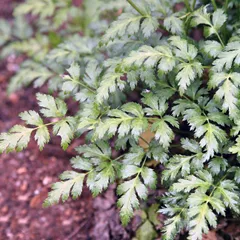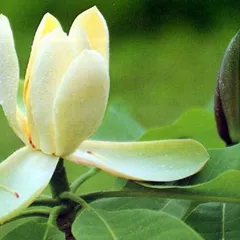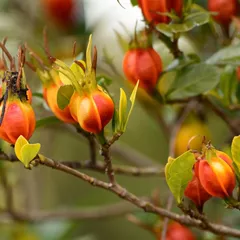Damp-Heat invading the Spleen
The information provided here is not a replacement for a doctor. You shouldn't use it for the purpose of self-diagnosing or self-medicating but rather so you can have a more informed discussion with a professional TCM practitioner.
At a glance
Preliminary reading: What is a pattern? The concept of Dampness The concept of Heat The Spleen in Chinese Medicine
Key attributes
Chinese name: 湿热蕴脾 Pinyin name: Shī Rè Yùn Pí
Pattern nature: Full
Pattern hierarchy: Specific pattern under Damp-Heat
Causes
Precursor patterns: Spleen Qi Deficiency
Common causes: 1. Exterior hot and humid environment, 2. Diet
Diagnosis
Common symptoms: Oily sweat Poor appetite Dull headache Feeling of heat Low-grade fever and twelve other symptoms
Pulse type(s): Rapid (Shu), Slippery (Hua)
Tongue description: Red with sticky yellow coating
Treatment
Treatment principle: Resolve Dampness, clear Heat
Common formulas: Lian Po Yin
Pathology
This pattern is essentially the same as Cold-Damp invading the Spleen except that in this case there is Heat.
Many of the symptoms are due to Dampness: the feeling of fullness and heaviness, the nausea, the sticky tongue coating and the Slippery pulse.
The symptoms that indicate Heat are the foul smell of the stools, the bitter taste in the mouth, the burning sensation of the anus and the scanty dark urine.
The low-grade fever is constant throughout the day, as opposed to low-grade fever from Yin Deficiency which only appears in the afternoon or early evening. It is caused by the combination of Damp-Heat.
The pattern as described here applies to relatively acute cases. In more chronic cases, some of the symptoms are often missing like the fever, the burning sensation of the anus and the dull-yellow complexion.
Causes
Precursor patterns: Damp-Heat invading the Spleen can derive from Spleen Qi Deficiency
Exterior hot and humid environment: More commonly the weather (e.g. in tropical summer for instance).
Diet: Prolonged and excessive intake of hot, greasy, fatty, fried or contaminated/unclean foods can cause this pattern. An excessive and prolonged intake of alcohol can also be a cause.
Diagnosing Damp-Heat invading the Spleen
Diagnosing a pattern in Chinese Medicine is no easy feat and should be left to professional practitioners. In particular one has to know how to differentiate between different types of pulses and tongue coatings, shapes and colors as well as learn to read from a long list of seemingly unrelated symptoms.
Pulse type(s): Rapid (Shu) or slippery (Hua)
Tongue description: Red with sticky yellow coating
Main symptoms: Oily sweat Poor appetite Dull headache Feeling of heat Low-grade fever Nausea or vomiting Feeling of heaviness Scanty and dark urine Dull-yellow complexion Yellow sclera of the eyes Bitter taste in the mouth Loose stools with foul smell Burning sensation in the anus Itchy skin and skin eruptions Abdominal and epigastric pain Thirst without a desire to drink Abdominal and epigastric fullness
Diagnosis commentary: The main characteristic symptoms are the feeling of fullness of the epigastrium and/or the lower abdomen, the feeling of heaviness and the sticky yellow coating on the tongue. Abdominal fullness and a sticky yellow tongue coating are enough in and of themselves to diagnose Damp-Heat invading the Spleen.
Treating Damp-Heat invading the Spleen
Treatment principle
Resolve Dampness, clear Heat
Herbal formulas used to treat Damp-Heat invading the Spleen



The top herbs in Lian Po Yin are Goldthread Rhizomes (Huang Lian), Houpu Magnolia Bark (Hou Pu) and Cape Jasmine Fruits (Zhi Zi)
Lian Po Yin
Source date: 1862 AD
Number of ingredients: 7 herbs
Key actions: Clears Heat. Transforms Dampness. Regulates Qi. Harmonizes the Middle Burner.
Formula summary
Lian Po Yin is a 7-ingredient Chinese Medicine formula. Invented in 1862 AD, it belongs to the category of formulas that clear Heat and expel dampness.
Besides Damp-Heat invading the Spleen, Lian Po Yin is also used to treat Damp-Heat in the Stomach or Damp-Heat.
Diet recommendations
Avoid greasy, fatty or fried foods and alcohol; eat grains, legumes, vegetables and greens. Rest also abundantly.
Consequence patterns
If left untreated Damp-Heat invading the Spleen can lead to Phlegm
